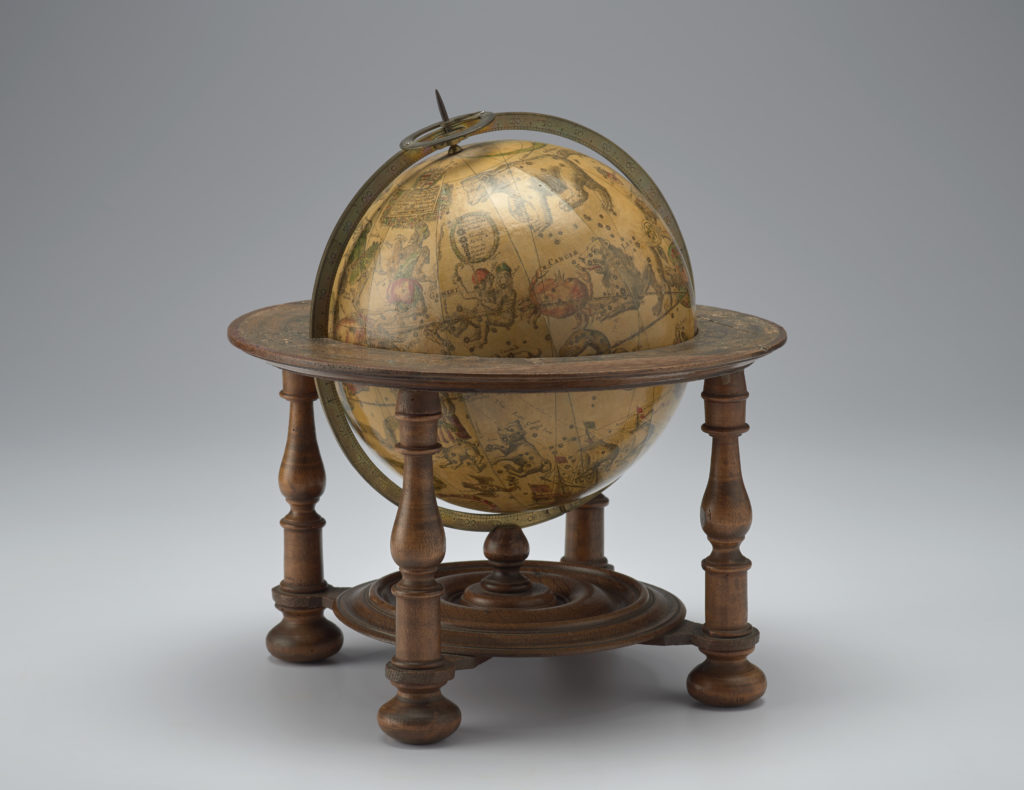Celestial Globe (work of art)
Artwork Info
Key Ideas
- Maps and globes offer important information about the people who created them.
- This globe shows how 17th-century Europeans understood the world and its relationship to the stars.
- This globe was most likely used as a study tool and as a decoration.
Learn More
Celestial Globe is a symbol of the European worldview in the 17th century. It is a big, heavy object that would have been used for decoration and study. World maps were much easier to carry, so they were used for navigation. Both maps and globes provide clues about the point of view of the people who made them. This globe was made by a European artist when Europe was colonizing people in other parts of the world. The artist’s cultural perspective informed the globe’s design. The constellations on this globe are labeled with names from European history and Greek mythology rather than their original names. They had been named by nonwestern cultures centuries before this globe was made.
Additional Resources
Resources for Teachers:
- Explore a digital collection of world maps from the 17th century.
- Read an article to discover how maps may have been used to plan trade journeys.
- Read an article about the role of maps in shaping international law.
Resources for Students:
- View a 17th-century world map from the University of Washington.
- Explore an interactive map of Indigenous territories, treaties, and languages. (Note: Although it is not an exact map, it shows how maps are used to communicate who is in control.)
- View another celestial globe at the Metropolitan Museum of Art.


